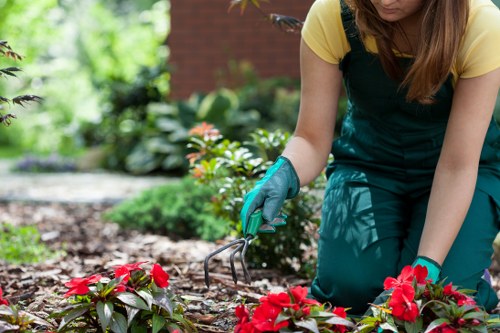Driveway Algae Removal in Ham: Keep Your Pathways Clean and Safe

Maintaining a clean and safe driveway is essential for every homeowner in Ham. One common issue that many face is the growth of algae on their driveway surfaces. Algae not only creates an unsightly appearance but can also make your driveway slippery and hazardous. Understanding how to effectively remove and prevent algae growth is crucial for preserving the beauty and safety of your property.
Algae thrives in damp and shaded environments, making driveways an ideal breeding ground, especially in areas with frequent rainfall like Ham. Without proper maintenance, algae can quickly spread, leading to more significant issues down the line. Fortunately, there are several methods available to manage and eliminate algae growth, ensuring your driveway remains pristine.
In this comprehensive guide, we will explore the causes of driveway algae, effective removal techniques, prevention strategies, and tips for selecting the right service provider in Ham. Whether you prefer DIY solutions or professional assistance, this article aims to equip you with the knowledge needed to tackle algae growth confidently.
Understanding Driveway Algae

Algae is a simple, plant-like organism that thrives in moist environments. On driveways, it typically appears as green or black patches and can spread rapidly under the right conditions. The presence of algae is not just a cosmetic issue; it can also indicate underlying problems with drainage and sunlight exposure around your property.
In Ham, the combination of mild climates and ample rainfall creates an ideal setting for algae growth. Driveways adjacent to trees or structures that cast shadows are particularly susceptible, as reduced sunlight limits the natural drying process that helps keep surfaces dry and algae-free.
Recognizing the signs of algae early can help you address the problem before it escalates. Look for discolored patches, slippery surfaces, and any signs of structural damage to your driveway caused by prolonged moisture exposure.
Effective Methods for Driveway Algae Removal

Removing algae from your driveway requires the right approach and tools. Below are some of the most effective methods to tackle this issue:
- Chemical Treatments: Utilizing specialized cleaning agents designed to kill algae can provide quick results. These products often contain bleach or other algaecides that eliminate existing growth and prevent regrowth.
- Eco-friendly Solutions: For those concerned about the environmental impact, there are natural alternatives such as vinegar, baking soda, or a mixture of water and dish soap. These options are safer for plants and pets while still being effective against algae.
- Pressure Washing: A pressure washer can remove algae from driveway surfaces without the need for harsh chemicals. This method uses high-pressure water to blast away algae and other debris, restoring the driveway's appearance.
Chemical Treatments
Chemical solutions are one of the most straightforward methods for algae removal. Products like bleach-based cleaners are highly effective in killing algae spores and preventing future growth. When using chemicals, it’s essential to follow the manufacturer’s instructions carefully to avoid damaging the driveway or surrounding vegetation.
For best results, apply the chemical treatment during dry weather to allow it to seep into the porous surface of the driveway. After applying, scrub the area with a stiff brush to ensure the chemicals penetrate and eliminate all algae.
While chemical treatments are effective, they should be used with caution, especially in areas where runoff can affect plants or water sources. Always wear protective gear and consider eco-friendly alternatives if environmental impact is a concern.
Eco-friendly Solutions
Eco-friendly algae removal methods are gaining popularity as homeowners seek safer alternatives to harsh chemicals. Natural ingredients like vinegar and baking soda can be surprisingly effective. For instance, a solution of white vinegar and water can kill algae without leaving harmful residues.
To use an eco-friendly solution, mix equal parts vinegar and water in a spray bottle, apply it to the affected areas, and let it sit for 15-20 minutes. Then, scrub the driveway with a brush to remove the algae. Rinse thoroughly with water to ensure no residue remains.
These natural remedies are not only safe for the environment but also cost-effective and easily accessible. They are an excellent choice for those looking to maintain their driveway without introducing harmful substances into their surroundings.
Professional Algae Removal Services
For extensive algae growth or homeowners seeking a hassle-free solution, professional driveway algae removal services are available in Ham. These experts use advanced equipment and techniques to ensure thorough cleaning and long-lasting results.
Hiring professionals can save time and effort, especially for large driveways or areas with persistent algae issues. Moreover, they can provide additional services such as sealing the driveway to prevent future algae growth and improving drainage systems to reduce moisture accumulation.
When selecting a professional service, consider factors such as experience, reputation, and the range of services offered. Reading reviews and asking for recommendations can help you choose a reliable provider that meets your specific needs.




